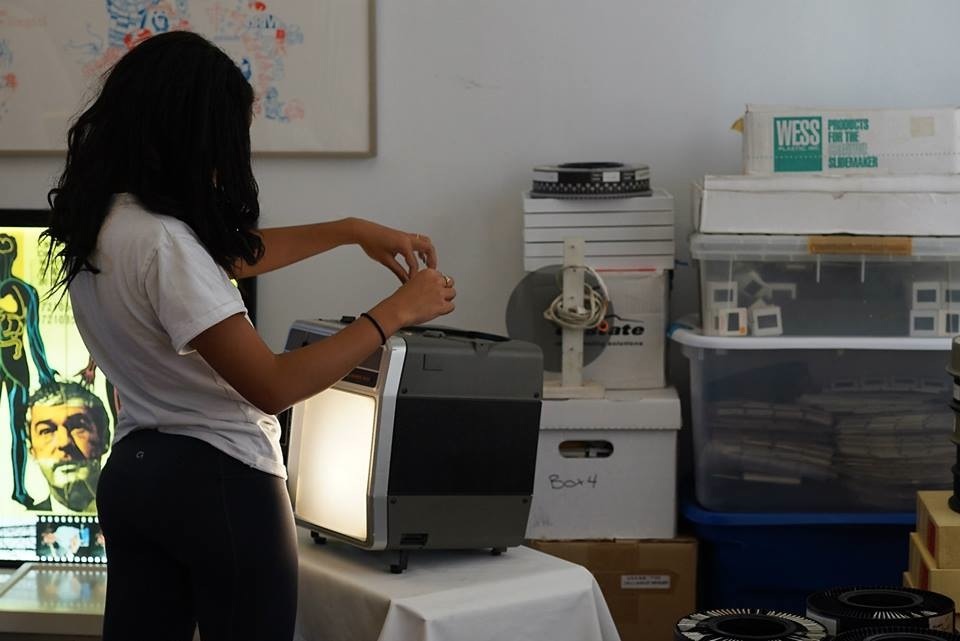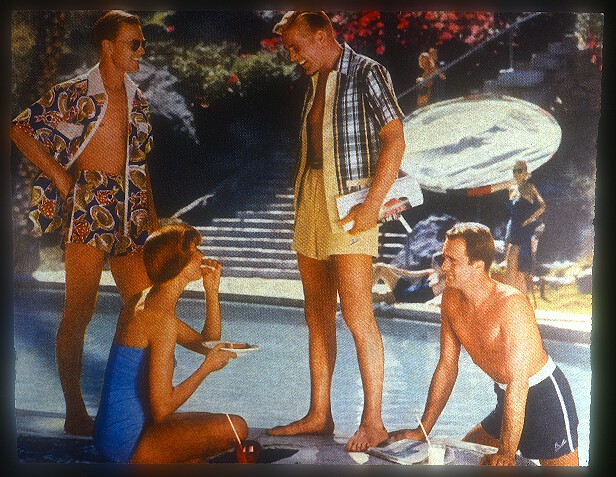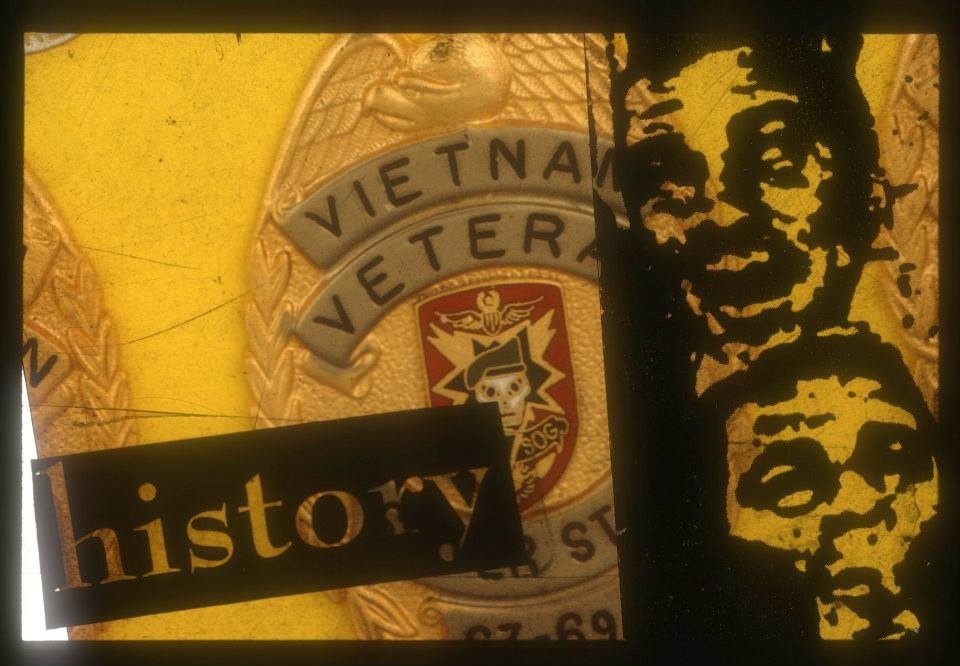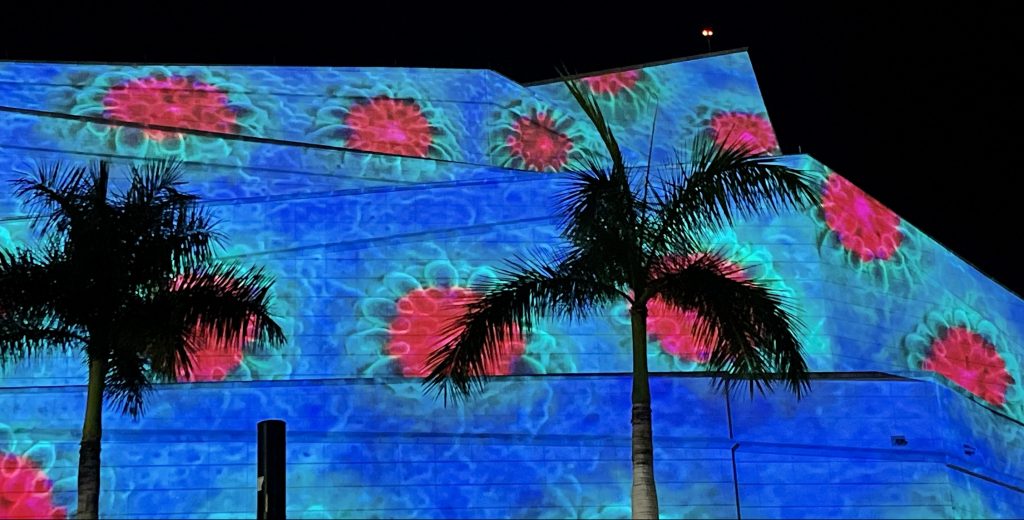
Obsolete Media Miami preserves picture, film history
Image from outer space, slide at O.M.M.
Climbing up the back stairs of a building in the Design District on North Miami Avenue, you pass by a door with flags signifying some kind of Buddhist center on your way to the newly opened offices and work space of Obsolete Media Miami, which is shortened as O.M.M. That’s pretty good karma, sounding as it does like the Buddhist meditative chant.
O.M.M. is like nothing else in Miami. It is a picture and film archive, an equipment repository, a space for artists, filmmakers and researchers to delve into the world of “obsolete” items, such as 35 mm slides, film reels, cameras, projectors. Run by artists Barron Sherer and Kevin Arrow, it’s like, as the artists say, “an A/V club” – a term likely also obsolete to many 20-somethings.
On this stifling hot afternoon, the wall air conditioning unit is doing just fine – it needs to, to protect the old, fragile tapes and film housed here. But the relieved artists confess they were initially concerned it wouldn’t live up to the job. They moved to the space in May, subsidized by developer Craig Robins’ Dacra company, after being awarded one of the first WaveMaker grants in March. The grants are administered by Cannonball Miami, with lead support from the Andy Warhol Foundation for the Visual Arts and major support from Knight Foundation. O.M.M. is also a 2015 Knight Arts Challenge finalist.
The space is delightfully old-school, crammed with machines, projectors, piles of reel films, and boxes and boxes of slides. Both Arrow and Sherer have long been collectors of these media objects from the past century. Arrow, who also works at the Frost Museum of Science, has gathered an archive of almost 100,000 35 mm slides, and makes art from his own slides. Sherer, who has worked at the Wolfson Florida Moving Image Archive, has been involved with preserving and researching moving and photographic imagery since the 1990s. As the two began to form O.M.M., more material has been pouring in.

A student works with equipment and archives, part of Locust Projects’ LAB program.
According to Arrow, as he shows off a table covered in slides from decades, museums are now sending them stuff by the thousands. Like “obsolete” book stores dumping their inventory as they close shop, Arrow says museums ask, “we will just throw these old slides and reels away if you don’t want them.” O.M.M. takes them.
So, for instance, Arrow points to images on slides from early space launches. Sherer mounts a film reel in a small room, a film which neither had seen. It also is of a moon launch. They can’t initially figure out what the date would have been – late 1960s, early ’70s? The film is hard to see; it will have to be cleaned up, restored. That’s part of what the duo does in this studio.
As an example: Sherer recently had a show at the Screening Room in Wynwood, which featured clips from 16 mm films from the Florida Moving Image Archive, which were the result of “laborious and expensive photochemical restoration.”

Slide image, date unknown, part of O.M.M. archives.
Nostalgia oozes out from the stacks of slides, metal film reels and antique equipment. Scattered about the space are film projectors of all sizes, slide machines from all eras; you can almost hear the ticks of a rolling film, the click-click of a slide projector all around. There is something so tactile here, something that seems missing from a purely digital process. And tactile contact with a broader community is a mission of O.M.M.
First off, it might come as a surprise that cultural institutions still have a need for some of the equipment that only O.M.M. has, and they lend it out.
O.M.M. provided a projector for a showing of Paul Sharits’ experimental mid-20th century film at the ICA museum in the Moore Building, for example. It’s a little like a bar that would like to have a DJ spin old vinyls, but doesn’t have a turntable anymore. They also provide historic footage to various institutions that need it, such as images for the 30th anniversary of the ArtCenter/South Florida on Lincoln Road.
But Arrow and Sherer also want to invite people to come and learn about this obsolete media, and just have fun with it, create new art and images out of those from the past.
In late June, a group of local high school students came over for the day, to make slide-based media, part of art gallery Locust Projects’ LAB (Locust Art Builders) program. The resulting works were incredibly sophisticated, and involving a hands-on process that is often missing from digital editing.

New art created by students from old images at O.M.M.
The cramped space is not set up to be a major venue, but Arrow and Sherer want to show screenings and have performative events for a small number of people, combining images with music and performance. Another goal is to conduct workshops on new ways to work with old media.
But O.M.M., in its collaborative spirit, is also working with other groups. It was contacted by the arts department at Miami International Airport, which has a significant and respected program highlighting public art, and will begin screening of 16 mm films likely in the D Concourse, from mid-July through August – including Buster Keaton classics.
“We have been pleasantly surprised by the number of venues, organizations, and cinemas contacting us for curatorial [events],” says Sherer. “A place to do what we do, or as tech support… It’s been really great.”
O.M.M. is a long-time culmination of interests and contacts, says Arrow. “Barron and I have known each other and have been working in the realm of obsolete and analog media for decades. When the Cannonball Wavermaker opportunity arose, we formulated the plan to develop an art project in the guise of a media archive, and O.M.M. was born. “Our tentacles have been out in the community for a long time prior to O.M.M., both individually and collaboratively.”
In the few short months of its existence, O.M.M. has made quite a presence. As for the future, they want “our project space [to be] multifunctional,” says Sherer. “Workshops that we’re going to gear up for in early 2016, super 8 mm boot camps, camera-less filmmaking – found footage, painting on film – slide-based media production and so on.”
O.M.M. represents a welcome trend emerging in the arts scene, a truly collaborative initiative that works with a varied group of individuals and institutions, while emphasizing the unique and important histories of Miami and beyond.
Recent Content
-
Artsarticle ·
-
Artsarticle ·
-
Artsarticle ·
